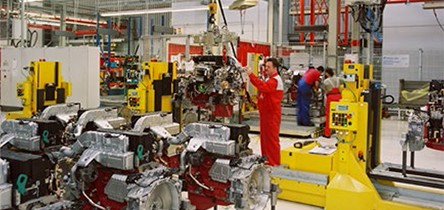Demand for workstation cranes and ergonomic lifting equipment is increasing faster than the overall material handling market
Industrial Lift and Hoist magazine recently wrote an article on how safety concerns, the economy and an aging manufacturing and supply chain workforce are increasing the demand for workstation cranes and other ergonomic lifting equipment.
According to the article, a combination of the push for ergonomics in the U.S. manufacturing sector and the improving economy has helped to bolster demand for investment in workstation cranes and other ergonomic lifting and positioning equipment.
While in material handling equipment is set to grow by approximately 7.7% this year and 8.7% next year, Matt Forsline, senior applications engineer and products manager for Schmalz Inc., believes that ergonomic equipment will see even a greater rate of growth.
Improved economic conditions are leading to greater capital equipment investments in material handling market overall, but it’s not just the economy that’s driving investment in ergonomic solutions, according to Jeff McNeil, marketing manager for Gorbel Inc.
He says that much of the push for investment in lifting and positioning equipment can be traced to recent manufacturing process changes. “We are seeing push for more lean manufacturing initiatives, more flexibility in production processes and a desire to speed up production rates,” he adds. The speeding up of production lines is one example. When that happens, it is more difficult for workers to do as much manually without jeopardizing their safety.
Among the advantages of workstation cranes cited in the article is that they can be set up in a smaller area than overhead cranes and do not require the building infrastructure to support the load being lifted and moved. Also they allow for the use of a crane to move the types of loads that had previously required a forklift. They can also handle loads of 50 to 100 pounds that workers had previously moved manually.
The aging manufacturing and supply chain workforce is also contributing to ergonomic and safety equipment investment. Jim Galante, director of business development for Southworth Products Corporation, says more workers are continuing to work past age 65 and fewer younger people are interested in working in the manufacturing sector, especially in jobs that require heavy physical labor.
Ergonomic solutions are not limited to workstation cranes but also include adjustable worker elevation platforms, balancers, container tilters, lift tables, manipulators, pallet rotators, stackers, vacuum assist devises, platform trucks, carts, flooring technologies, and intelligent assist devices. He says any of these can improve the ergonomics of a task.
“Each company needs to carefully evaluate what the best product is for each application,” Galante says, adding that it is possible that they could need different equipment for different parts of their facility. He says one unbiased resource for manufacturing and supply chain professionals on this subject is the Ergonomic Assist Systems and Equipment (EASE) Council of the MHI.
There is little doubt that ergonomics and safety is an issue of growing importance in the manufacturing and supply chain industry. “If a company has the desire and means to invest in new or upgraded equipment, why not buy equipment that will be more beneficial for their workers,” says Brian Stephens, senior product manager for Terex Material Handling North America,
Stephens says the value of having equipment that doesn’t cause harm to employees has been magnified in the current business environment of rising health care costs. Also, he says it shows workers that the company is investing in them, which could motivate operators to do a better job for their company. “Safety is the No. 1 reason for the investment, but workers are often more productive as well.”
Click here to view the complete article.
The EASE Council of MHI is the resource for trends, information, practices, equipment, and organizations that focus on ergonomics and improving the working interface between people and the materials they must move and use to reduce injury, increase productivity while providing a significant return on investment. EASE members are the leading manufacturers of ergonomic and safety equipment. Visit www.mhi.org/EASE to learn more.





